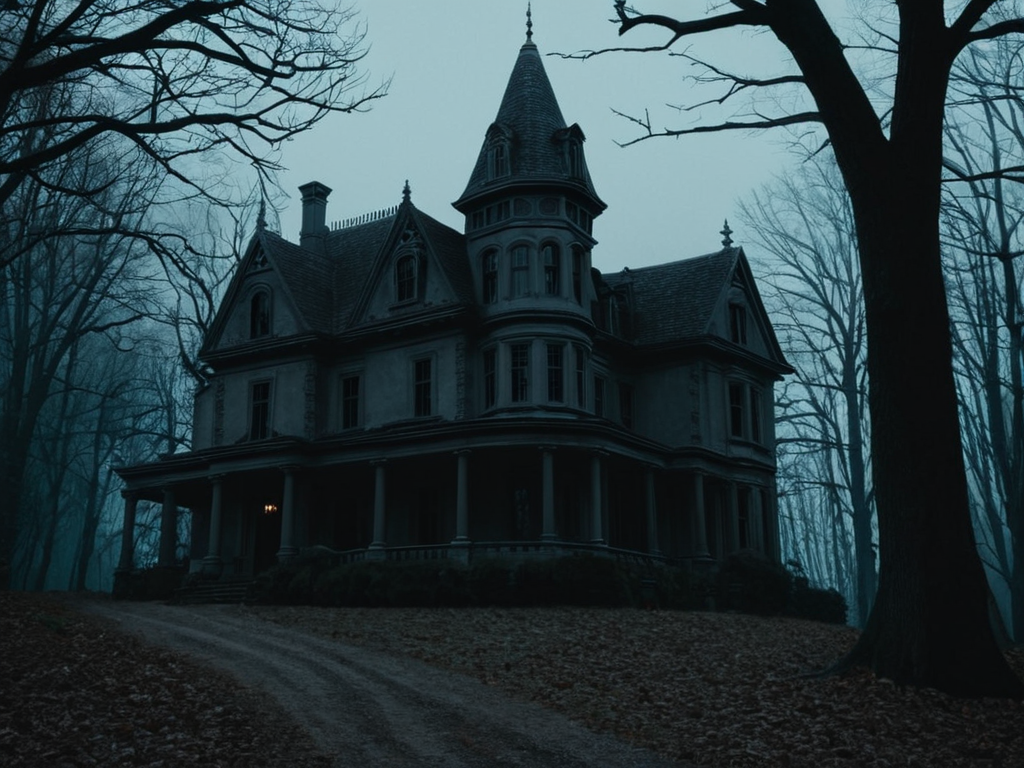Unraveling Fear in 'The Haunting of Hill House'

As we delve into the world of horror, few shows have captured our collective imagination quite like The Haunting of Hill House. This Netflix series has left audiences enthralled with its intricate web of storytelling, complex characters, and unrelenting terror. But what makes this show so uniquely terrifying? In this post, I’ll explore how art and literature contribute to the horror in The Haunting of Hill House, using examples from the show to illustrate my points.
The Art of Fear
One key element of The Haunting of Hill House is its use of atmosphere. The show’s creator, Mike Flanagan, has spoken about his desire to create a sense of unease and uncertainty in viewers. To achieve this, he employs a range of techniques from art and literature. For example, the show’s cinematography often features long, slow shots that emphasize the grandeur of Hill House, but also make the viewer feel like they’re being watched. This is reminiscent of The Shining, where Stanley Kubrick used similar techniques to create a sense of unease.
Another artistic technique used in The Haunting of Hill House is the use of color. The show’s color palette is deliberately muted and dark, which adds to the overall sense of foreboding. This is similar to the work of Edgar Allan Poe, who often used dark colors to create a sense of melancholy and despair.
Literature as Inspiration
The characters in The Haunting of Hill House are also drawn from literary sources. The Crain family’s history, for example, is inspired by the works of Shirley Jackson. Jackson’s novel The Haunting of Hill House, published in 1959, tells the story of four people who spend a summer in a haunted house. While the Netflix series takes significant liberties with the original story, it retains many of the themes and motifs that make Jackson’s work so effective.
Another literary influence on The Haunting of Hill House is the works of H.P. Lovecraft. The show’s use of cosmic horror, where supernatural events are linked to ancient deities or otherworldly forces, is reminiscent of Lovecraft’s stories about Cthulhu and other Old Ones. This is particularly evident in episodes like “The Bent-Neck Lady,” which features a character who becomes possessed by an otherworldly entity.
The Power of Symbolism
Symbolism is another key element of The Haunting of Hill House. The show often uses symbols to represent abstract concepts or themes, such as the use of the door in the basement to represent the Crain family’s past trauma. This is similar to the work of authors like Toni Morrison, who often used symbols to explore themes of race and identity.
Another example of symbolism in The Haunting of Hill House is the use of the character of Luke Crain. Luke is a symbol of the family’s collective guilt and shame, as his death is linked to the events that occurred at Hill House. This is similar to the work of authors like Gabriel Garcia Marquez, who often used characters to represent abstract concepts or themes.
Conclusion
In conclusion, The Haunting of Hill House is a show that owes a significant debt to art and literature. From its use of atmosphere and color to its literary influences and symbolism, the show is a masterclass in how to create a sense of fear and unease in viewers. Whether you’re an artist or a writer, there’s much to be learned from this show about how to effectively craft a horror story that will leave audiences enthralled and terrified.
About Elizabeth Hernandez
I'm Elizabeth Hernandez, a seasoned editor with a passion for the intersection of voyeur photography and erotic fiction. With a background in fine art and literature, I help curate stories that spark desire and conversation on voyeurpicture.com. Let's explore the boundaries together.
